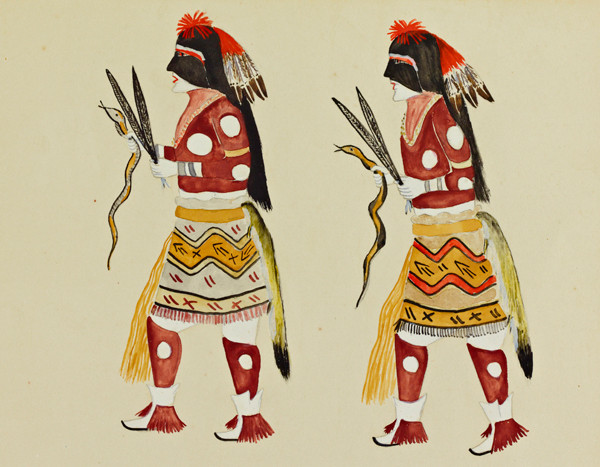The American Southwest, rich in Native American culture, is home to numerous tribes with unique traditions. Among these, the Hopi tribe, residing on the northeastern border of Arizona, is renowned for a captivating and historically significant ceremony: the Hopi Snake Dance. This intricate ritual, deeply rooted in their spiritual beliefs, is a testament to the Hopi people’s connection with nature and their enduring cultural heritage.
Rooted in ancient practices, the Hopi Snake Dance is not merely a performance but a solemn religious observance. The Hopi, who consider snakes as their brethren, believe these reptiles act as messengers to the deities residing in the underworld, particularly the rain gods. Consequently, this elaborate dance is widely understood as a prayer for rain, vital for the arid lands they inhabit and their agricultural way of life. This profound ceremony, performed annually, underscores the Hopi tribe’s intricate relationship with their environment and their spiritual quest for balance and prosperity.
The Hopi Snake Dance is a culmination of a sixteen-day religious ceremony, typically held in mid to late August. Key participants in this sacred ritual are members of the Snake and Antelope clans from all three mesas in Hopi Country. These dedicated individuals, known as snake priests and antelope priests, prepare meticulously for their roles, donning special garments and costumes that enhance the visual and spiritual impact of the dance. Historical records, including a black and white video from 1913, document a performance given for Theodore Roosevelt in Walip, Arizona, revealing the elaborate nature of these costumes. Dancers were adorned with headdresses, ankle decorations, and body paint, further emphasizing the ceremony’s solemnity and deep-seated traditions.
 A black and white photograph from 1913 captures Hopi snake dancers in Walip, Arizona, showcasing their traditional headdresses and body paint during a performance for Theodore Roosevelt, part of the historic Hopi Snake Dance ceremony.
A black and white photograph from 1913 captures Hopi snake dancers in Walip, Arizona, showcasing their traditional headdresses and body paint during a performance for Theodore Roosevelt, part of the historic Hopi Snake Dance ceremony.
The preparation for the Hopi Snake Dance is as significant as the dance itself. Several days prior to the ceremony, the chosen dancers embark on a snake hunt, seeking out snakes, including highly venomous rattlesnakes. This act is not one of aggression, but of reverence, reflecting the Hopi belief in the snake’s spiritual role. Adding to the ritualistic purification, two days before the snake dance, participants undertake a fast. This period of fasting and intense preparation is believed to heighten their spiritual focus and strengthen their connection with the rain gods, fostering the deep trust they place in the snakes as intermediaries.
The dance unfolds with a structured sequence of movements and chants. The antelope priests initiate the performance, entering the sacred space and stomping in a circle around an altar before forming a line. This sets the stage for the snake priests, who then join and line up opposite the antelope priests. As both groups stand facing each other, they begin a slow, rhythmic chant, swaying in unison, building the ceremony’s intensity. This formation eventually breaks as a young snake priest emerges, stepping forward towards the snake altar.
This lead dancer, chanting and focused, approaches the altar where the snakes are held. An elder snake priest follows closely, dusting the younger priest’s shoulders with a sacred feather, a gesture of blessing and protection. In a dramatic moment that embodies the dance’s essence, the young priest retrieves a rattlesnake, holding it by the neck in his teeth. This act, seemingly perilous, is performed with a sense of profound harmony and trust between the dancer and the snake, reflecting the Hopi’s deep spiritual connection with these creatures.
Concluding the powerful Hopi Snake Dance, all participants partake in a final, critical ritual: the drinking of an emetic. This act of induced vomiting is a purification rite, intended to purge any potential snake venom or harmful charms, ensuring the dancers’ physical and spiritual well-being after their intense engagement with the snakes and the spiritual realm. The Hopi Snake Dance remains a vibrant and compelling testament to their enduring traditions, spiritual depth, and unique cultural expression.
